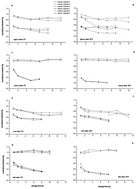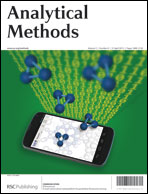The stability and partitioning of inorganic mercury (Hg2+) in natural waters was tested under different storage conditions. The experiments were carried out by spiking labelled Hg2+ to natural concentrations (from 3 to 13 ng L−1) in marine, coastal lagoon, lake, river, and rain waters. Hg2+ was labelled with high specific activity 197Hg. The experiments tested the dissolved and particulate-bound fractions in 10 to 13 days time trends under different storage conditions, namely temperature, natural and preserved by acidification, and container materials (Teflon, borosilicate glass and polyethylene). The concentration of labelled Hg2+ in non-preserved waters decreased significantly depending on the type of water and the storage conditions. In the case of marine and lake waters it was stable over a period of 10 days, whereas in the case of river and lagoon waters 20% of labelled Hg was lost. The partitioning of labelled Hg2+ between the solid and dissolved fractions during the storage period varied with the type of water and the storage conditions. For short term storage periods (1 day after labelled Hg2+ spiking) a significant amount of Hg2+ was transferred to particulates, ranging from 40 to 70%, with refrigerated samples reaching equilibrium more slowly. The labelled Hg2+ in water samples preserved by 1% HCl addition was stable at room temperature (20 °C) and in a refrigerator (5 °C) when stored in Teflon and borosilicate glass, but significant losses were observed when stored in polyethylene.

You have access to this article
 Please wait while we load your content...
Something went wrong. Try again?
Please wait while we load your content...
Something went wrong. Try again?


 Please wait while we load your content...
Please wait while we load your content...